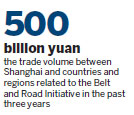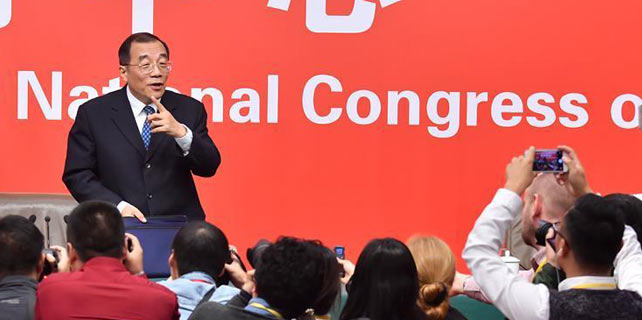City government rolls out new plan to boost trade and investment
The Shanghai municipal government has unveiled an action plan to facilitate trade and investment related to the Belt and Road Initiative, including a 15-step scheme aimed at forming a multi-level cooperative network for such activities, officials said.
The action plan is part of a 60-item package announced by the municipal government on Oct 11 that covers areas such as financial services, construction, cultural communications and talent training.
According to the plan, the government has created 10 measures to open up the financial sector and promote the establishment of a global financial services center. It is also focused on accelerating the development of the second phase of the China International Payment system so as to facilitate cross-border payment and clearance of Chinese yuan.
According to Wang Sizheng, an official from the municipal development and reform commission, the action plan will provide further support for Shanghai in the Belt and Road Initiative during the 2017-2020 period, and is also a follow-up of the city's previous efforts in the past three years.
He noted that the existing China (Shanghai) Pilot Free Trade Zone, the to-be-developed free trade port area in the city as well as policies and regulations to strengthen connections will help boost trade and investments related to the Belt and Road Initiative.
Wang added that five functional platforms will be established to help achieve the goal. They include China's first import expo which will be held next year, a bonded exhibition center for imported goods from countries and regions related to the Belt and Road Initiative, a comprehensive service platform for the promotion of trade and investment, a service platform to support technology, trade, measures and enterprises related to the initiative, and a base for culture, service and trade located in the free trade zone.
The government announced six measures aimed at strengthening the nation's aviation network and shipping service system so that it can enhance multi-modal transportation between China, Europe and other areas.
With regard to talent training, the government will work with countries and regions related to the initiative to build around 20 joint labs or research centers in the coming five years and support outstanding young scientists in their research in Shanghai. Six thinktank projects will be established by local universities to offer support and improve resource integration.
Soon after China unveiled the action plan of the Belt and Road Initiative in March 2015, Shanghai launched a plan focusing on trade and investment, financial cooperation, culture exchange and infrastructure, said Tang Zhiping, director of the Shanghai municipal development and reform commission.
In the past three years, Shanghai invested $5.49 billion in 246 projects in countries and regions related to the Belt and Road Initiative. Trade volume between Shanghai and related countries and regions reached 500 billion yuan ($75.6 billion), accounting for more than 20 percent of the city's total.
wang_ying@chinadaily.com.cn

(China Daily USA 10/20/2017 page9)












